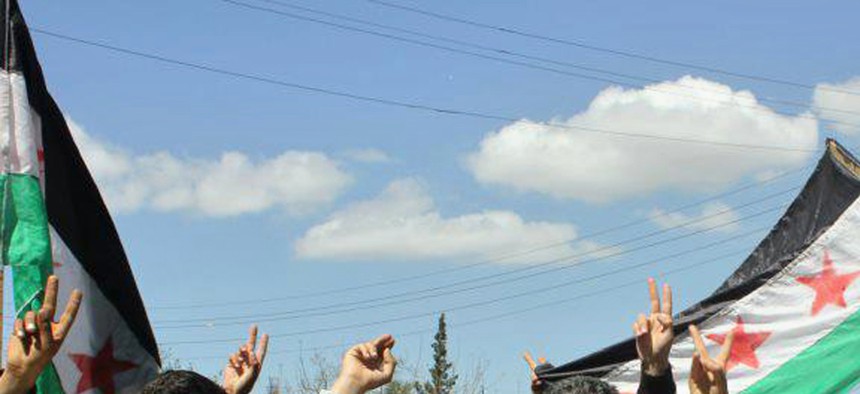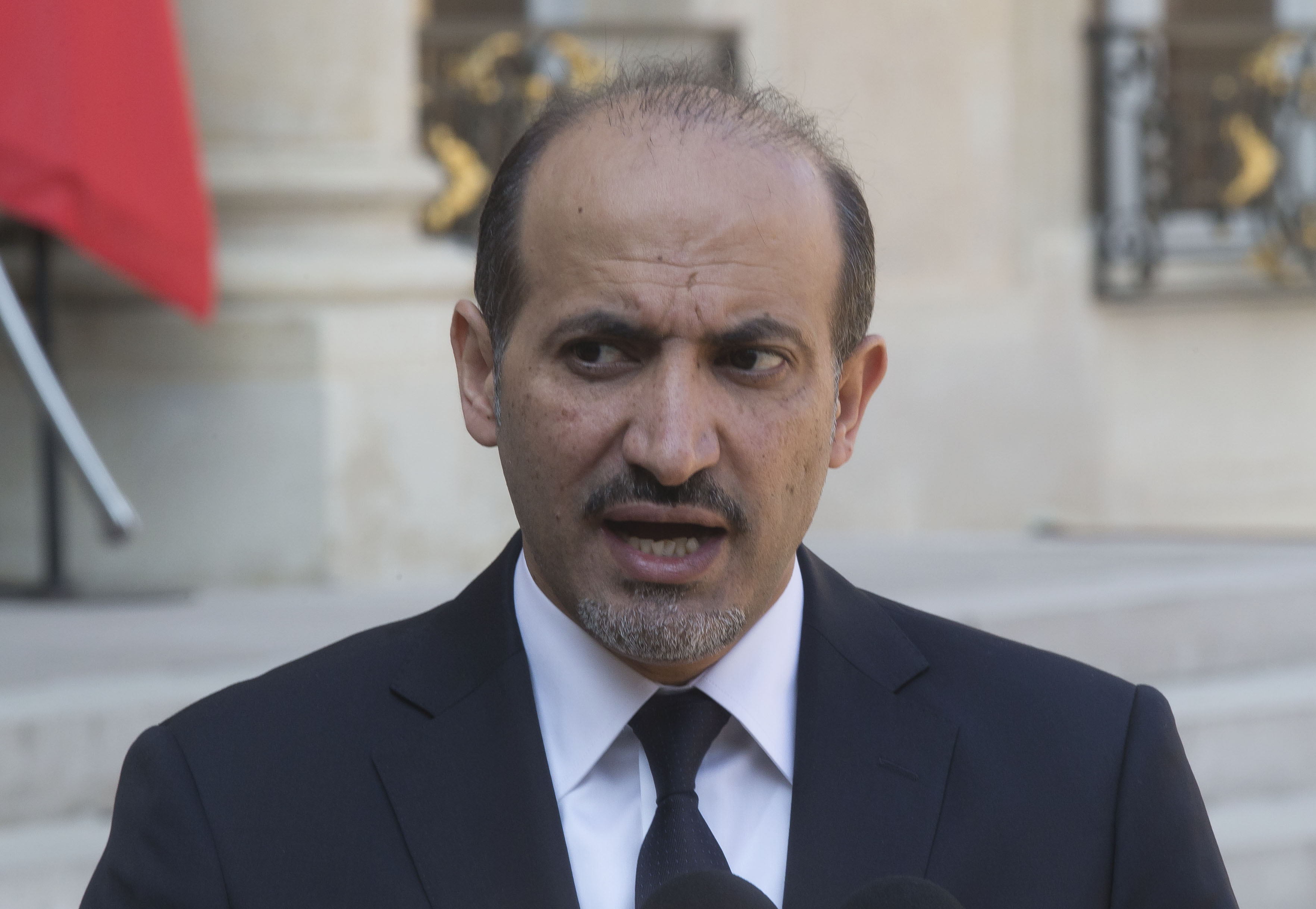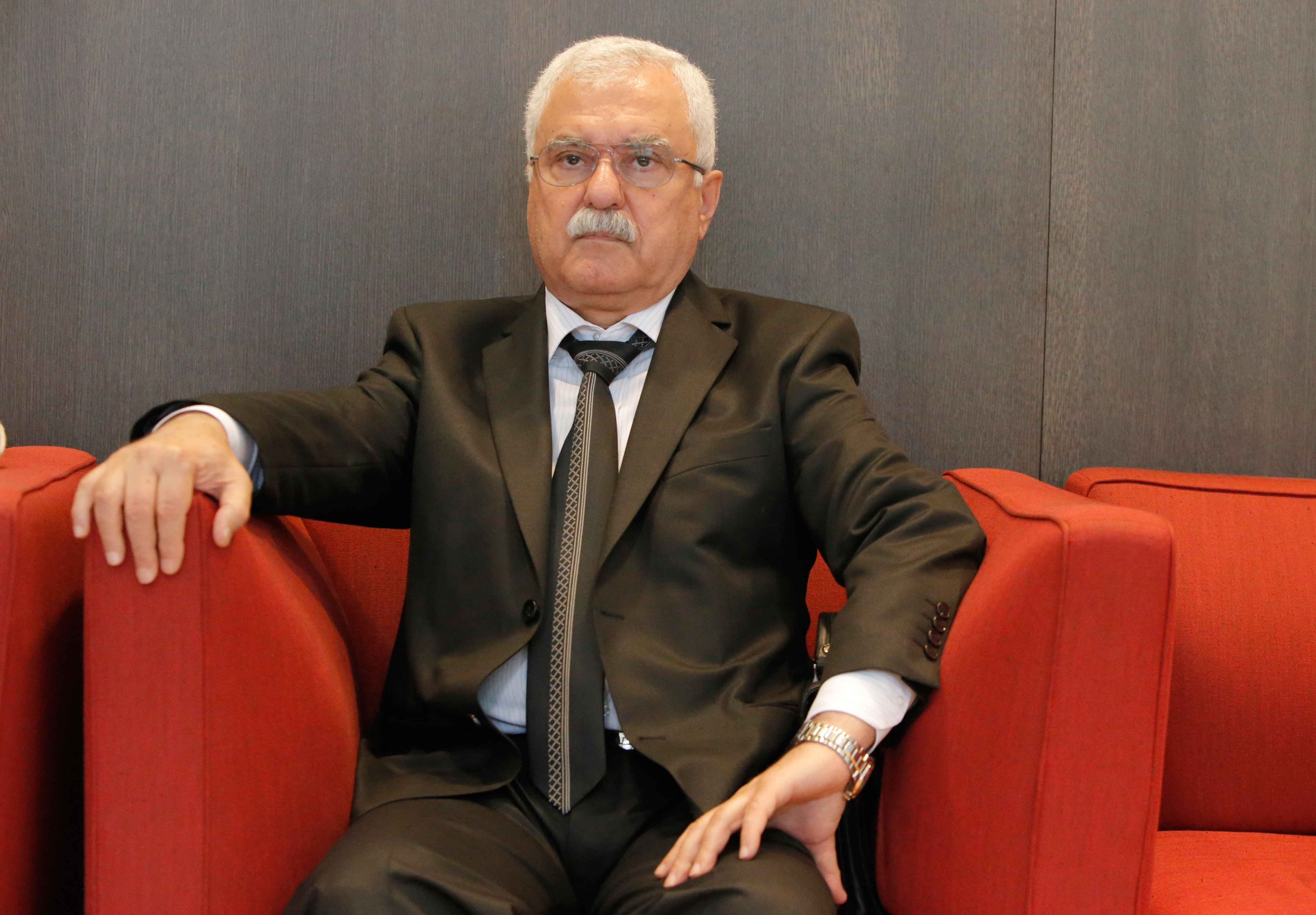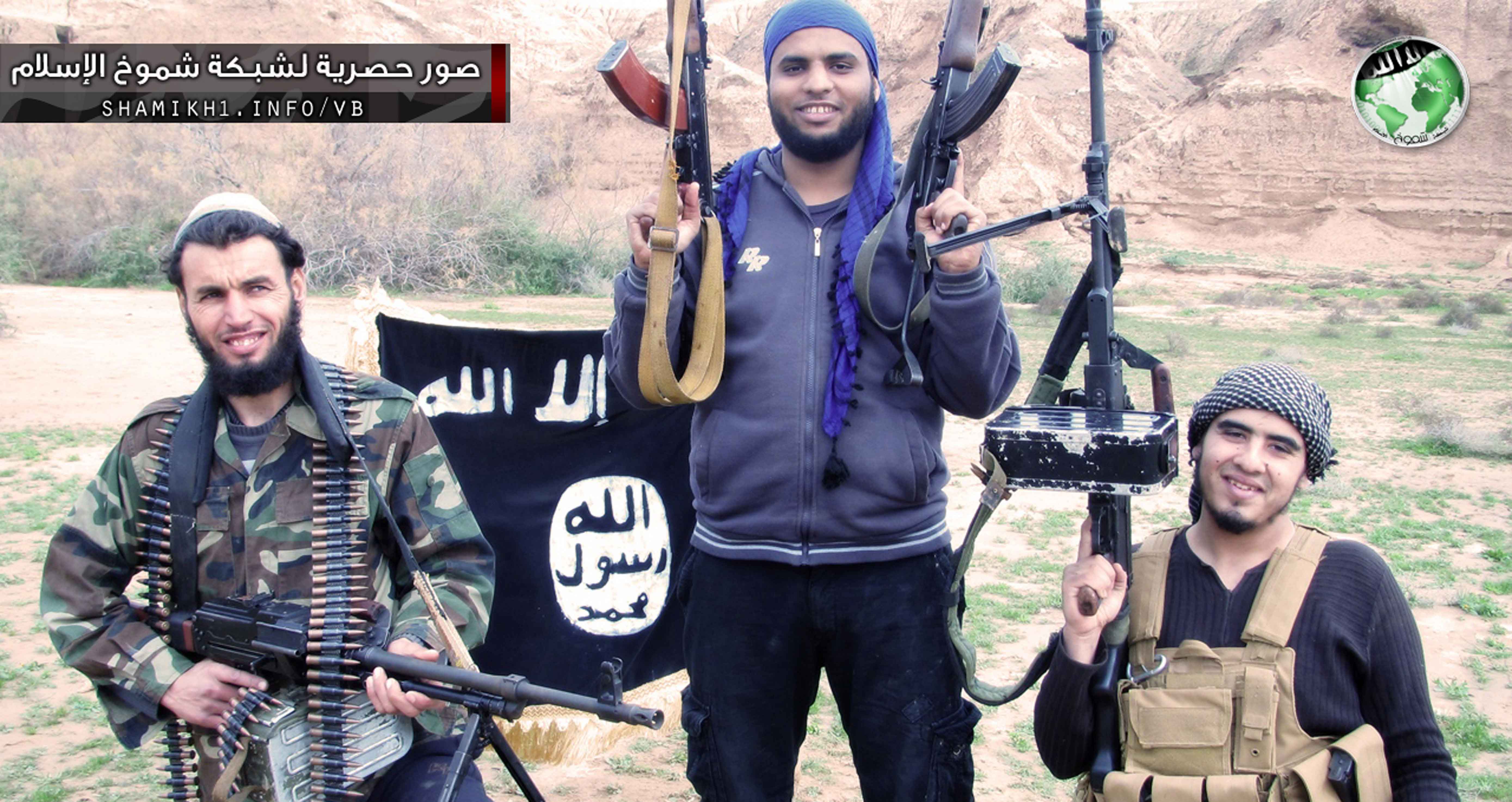
Syrian protestors in Idlib, Syria The Syrian Revolution/AP
Defense One Guidebook: Who’s Who in Syria’s Opposition
A primer on Syrian rebel factions, their aims, and their history. By Defense One Staff
The myriad of rebel groups in Syria has members of Congress -- along with the American public -- questioning the value of a military intervention there. To help out, here’s a guidebook to help navigate the opposition groups working with the international community.
Political Groups

(Michel Euler/AP)
National Coalition for Syrian Revolution and Opposition Forces
(aka: Syrian Opposition Coalition)
Current leader:
Ahmad Jarba
Created:
November 2012
The group is known as “the Syrian opposition” in the foreign media, but it is really a collection of organizations that united in Doha, Qatar, in November 2012, under one umbrella so that international partners can better channel their support. Countries including the United States, Great Britain, Turkey and Saudi Arabia currently back the organization.
The coalition was developed after former Secretary of State Hillary Clinton criticized the Syrian National Council for lacking frontline fighters in their ranks. The idea then grew from a proposal made by Riad Seif, a longtime activist and critic of Bashar Assad’s government. Its first president was Moaz al-Khatib who resigned in March 2013 after criticizing foreign donors for placing too many conditions on aid. Currently, the organization is lead by Ahmad Jarba, a former political activist who was chosen in July 2013. According to BBC News , Jarba has close ties with tribes in Eastern Syria, and also keeps in touch with members of the leadership in Saudi Arabia. Currently, the organization lists 114 members, including those belonging to the Syrian National Council, the Syrian Revolution General Commission, groups representing Kurdish interests and many more. The Supreme Military Council, or the armed rebels, also supports the SOC.
The SOC’s goals include overthrowing the Assad regime, promoting a “civil democratic Syria,” and preserving the unity of the country, its people, and its cities.

(Francois Mori/AP)
Syrian National Council
Current leader: George Sabra
Founded: October 2011
This was one of the first groups to set up shortly after the violence in Syria broke out in 2011, and was initially billed as the umbrella under which the rest of the opposition would unite. In March 2012, the group claimed that it represented 90 percent of the Syrian opposition, but faltered after it was unable to convince the international community over the veracity of this claim, according to the Carnegie Middle East Center.
Currently, it is one of the largest constituents of the National Coalition of Syrian Revolution and Opposition forces; among its ranks are number of groups including the Syrian Muslim Brotherhood, and the Group of 74, another large Islamist bloc.
Though many Sunni Muslims consider themselves members of the SNC, it is currently lead by George Sabra, a Christian dissident who was previously jailed for his activism against the Assad government.
Military Groups

(Image by Francois Mori via AP)
Supreme Joint Military Command
(Also known as the Supreme Military Command)
Current Leader:
Gen. Salim Idris
Created: December 2012
This is a unified military command created in December 2012 to better organize the opposition’s fight against Assad. Leading the SMC is Gen. Salim Idris, a former officer in Bashar al-Assad’s army. The SMC is divided into five geographic fronts with six members for each region, according to Elizabeth O’Bagy , an analyst at the Institute for the Study of War. Military and civilian personnel lead each front and are responsible for organizing supply chains, intelligence and other key wartime needs. The SMC supports the Syrian Opposition Coalition.
The group consists of various rebel commands, including battalions that used to be part of the Free Syrian Army, the Al-Farouq battalions, the Al-Sham Brigade, and the Tawhid Brigrade, according to O’Bagy. She says that the SMC has worked to “repudiate” the more extreme elements while also promoting a diverse group of interests.
The group isn’t the Syrian rebels first attempt to create a unified military organization against Assad’s army. Past attempts include the Higher Revolutionary Council in February 2012, and the Joint Command created in September 2012. O’Bagy said in March that the SMC is “only organization that, if properly supported, could ultimately help fill the vacuum created by the collapse of the state security apparatus and establish a framework for rebuilding Syria’s security and governing institutions,” she wrote. But others, like Joshua Foust , say the SMC has failed to come close to achieving that diplomats’ dream.
More recently, Secretary of State John Kerry said that Gen. Idris was prepared to come to Washington to testify in front of Congress on the ongoing situation on the country.
Extremist Groups

(AP Image)
Al-Nusra Front
This Salafist group is a designated terrorist organization affiliated with al Qaeda in Iraq that is fighting to establish an Islamist state in Syria. According to the Quilliam Foundation, the group developed out of jihadists that used be based in Syria but fought in Iraq for extremist leaders. After the Syrian government cracked down on the extremist elements in 2007, the group fled to Iraq where they stayed until 2011. They are now reentering the fight against Assad, bringing thousands of foreign fighters, especially from other Arab countries and North Africa.
The Syrian Islamic Front
The Front is Salafist organization financed largely through donations from Persian Gulf states. The group has over 13,000 fighters and is loosely affiliated with the SMC, according to the Center for American Progress. Though they are not affiliated with the al-Nusra Front, their goal is also to establish an Islamist state.



